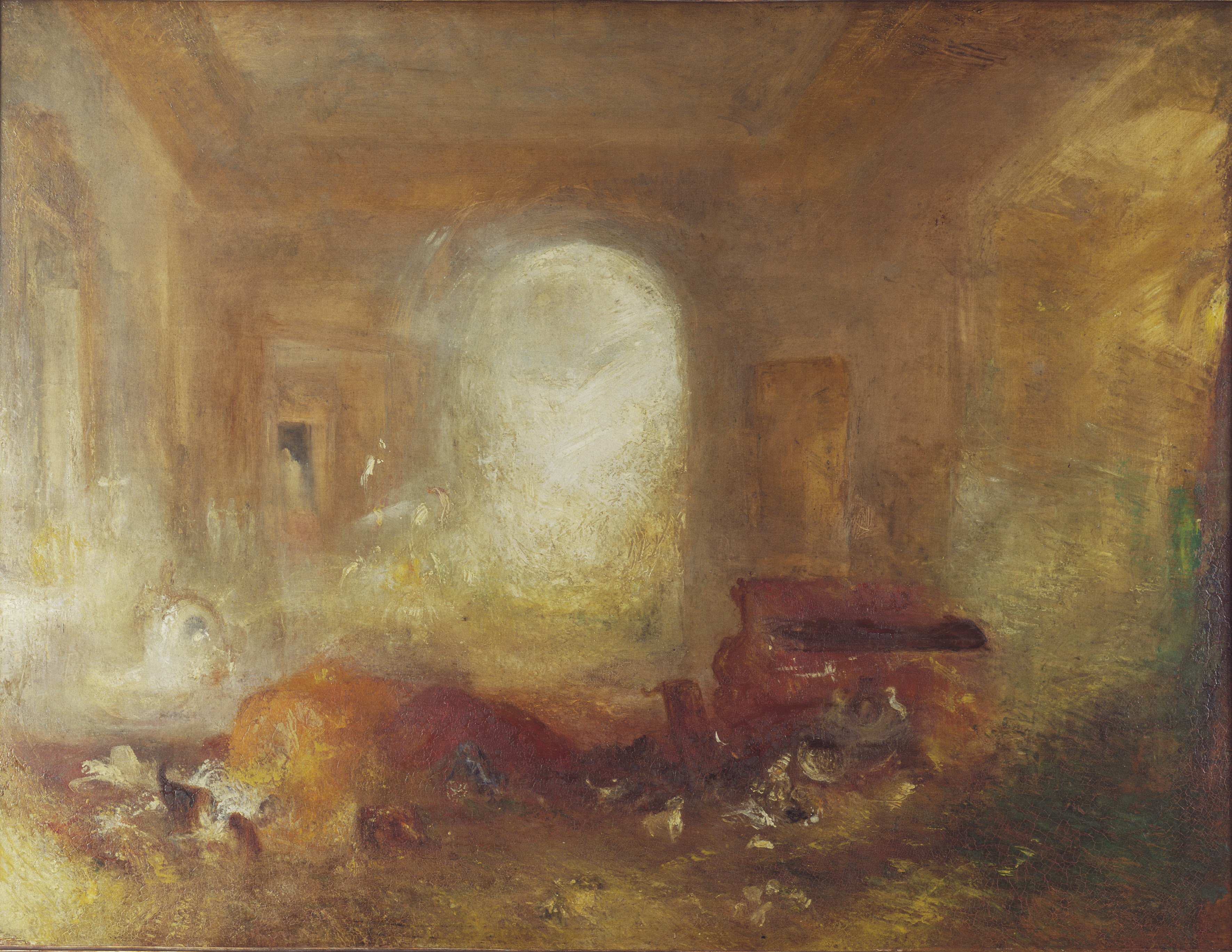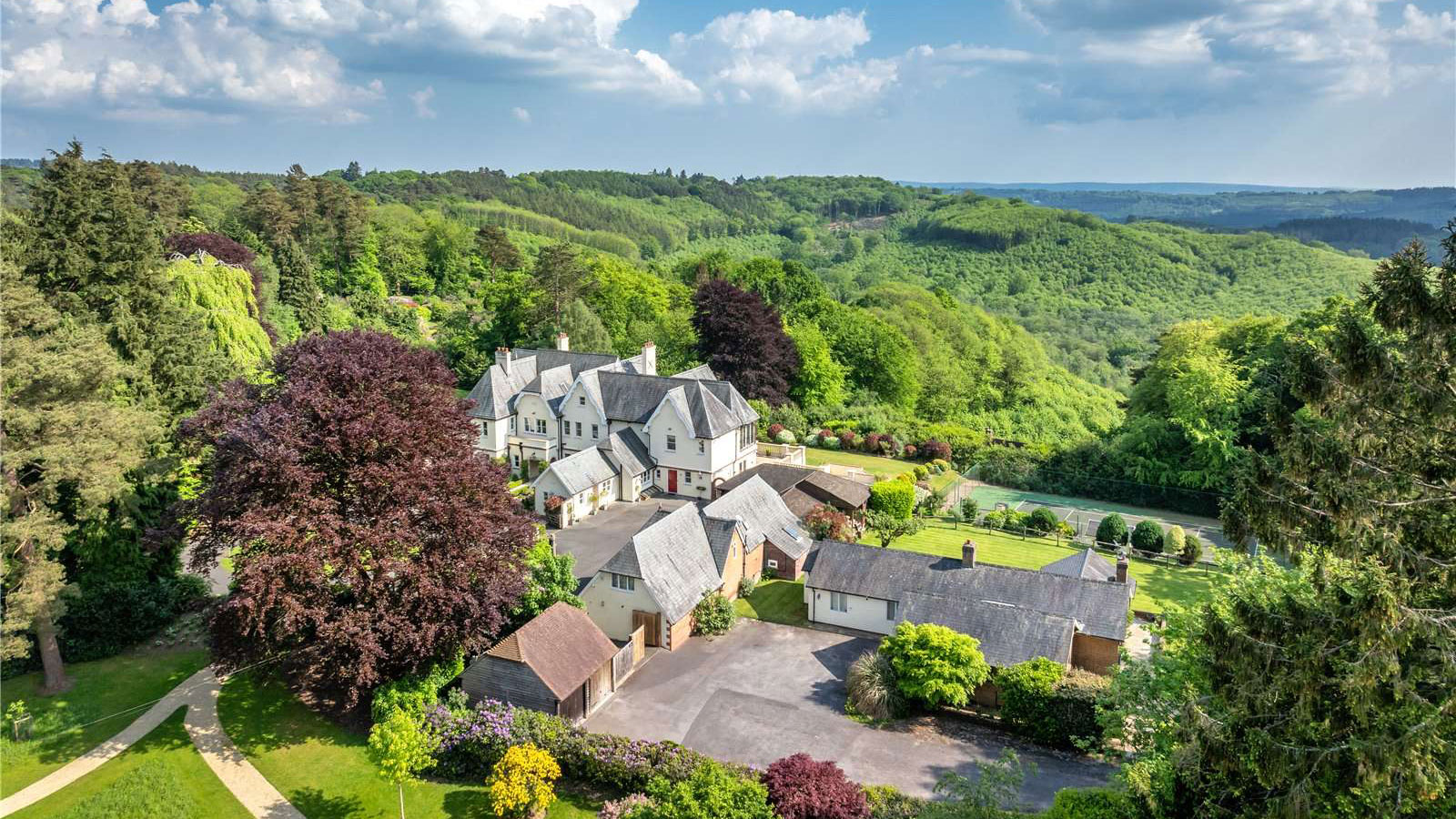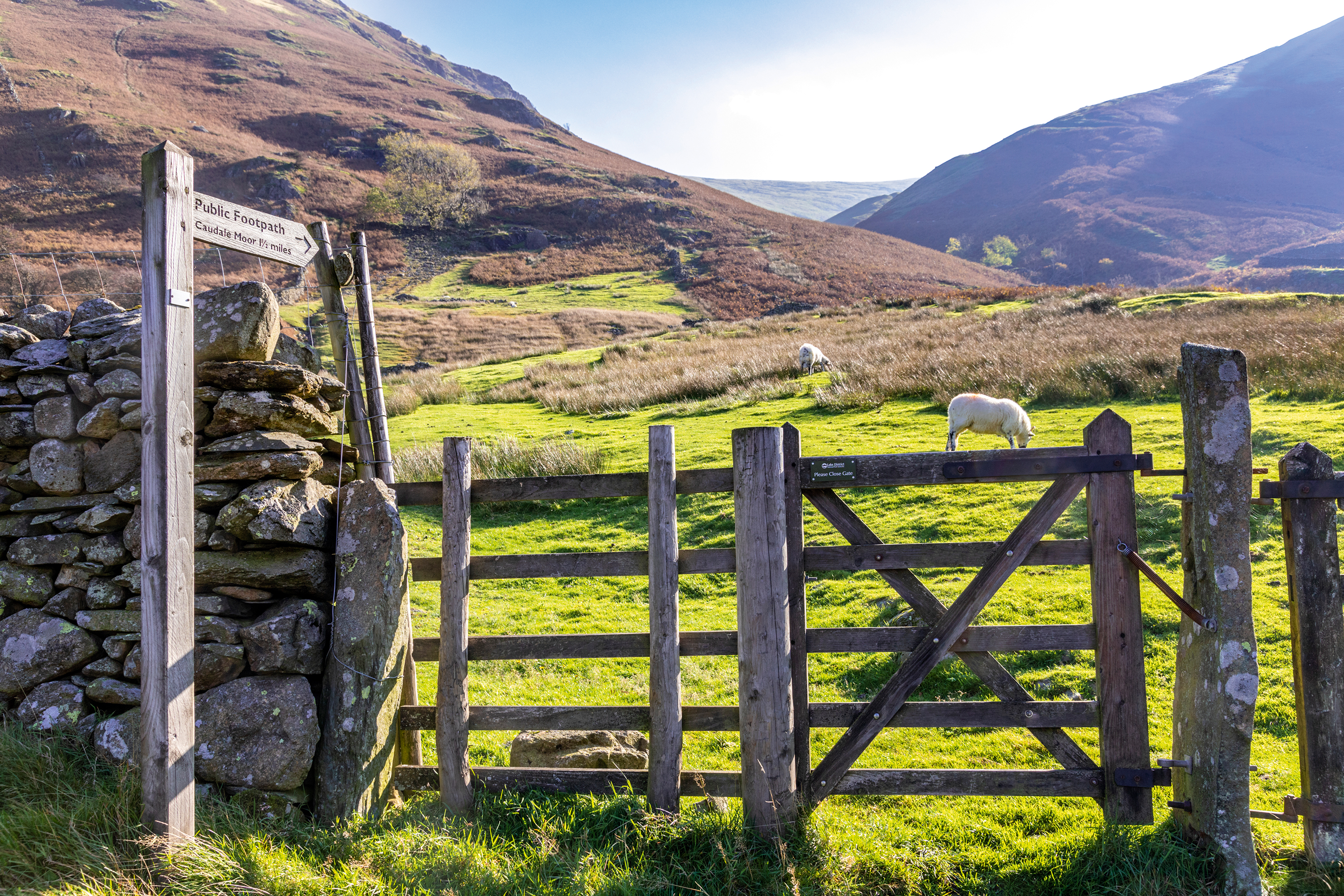My Favourite Painting: Fergus Henderson
'There should be one point of simple, enticing clarity – a pickled walnut, perhaps, which is what I most strongly associate with this image – that compels you to dive in. Come! Commune with the pickled walnut!'


Fergus Henderson explains his choice, Interior of a Great House by Turner
'When I studied architecture, we spoke a lot about the iconography of a painting, not meaning symbolism as such, but a central point that captivates you and draws you in. It is a beguiling idea, which this picture expresses: the central radiant beam inviting you to become immersed.
'As my career moved towards cheffing, I became consumed by the idea of the iconography of the plate and it is this painting that I use as a touchstone. There should be one point of simple, enticing clarity – a pickled walnut, perhaps, which is what I most strongly associate with this image – that compels you to dive in. Come! Commune with the pickled walnut!
Fergus Henderson is a chef and founder of the London restaurant St John. His new book, The Book of St John, was published last month
John McEwen comments on Interior of a Great House by Turner:
In the Turner catalogue raisonné, this picture is listed as Interior at Petworth, about 1837, with a qualification: ‘Although identified as Petworth when first listed in the National Gallery inventory in 1905 the picture depicts no recognisable room.’ It came from Turner’s studio, where pictures were often left untitled. Nonetheless, it was purported to show Petworth’s Marble Hall and to have been painted in reaction to Lord Egremont’s death in 1837: ‘The suggestion of a catafalque with coat-of-arms, surrounded by dogs, and the sculptures that possibly allude to Lord Egremont’s collection of antique and contemporary examples… All is in a state of dissolution, above all from the power of [Rembrandtesque] light flooding from the right.’
Now, however, the painting is tentatively said to describe the drawing room of the neo-Gothic castle (since destroyed) that architect John Nash built for himself on the Isle of Wight. In 1827, Turner stayed there with Nash, as well as at Lord Egremont’s magnificent 17th-century Petworth House in West Sussex. At both, he was an honoured guest as much as a working artist, his every need met.
His visit to Cowes coincided with that of George IV, a passionate yachtsman, who attended the regatta, then in its second year, for the first time. The King gave the event the regal endorsement of a cup and Cowes was abuzz. Turner persuaded Nash to commission two paintings of the regatta and extended his stay.
He also painted another untitled interior, Music Party, which was also once thought to be of Petworth; it, too, has now been assigned to East Cowes Castle. They could, of course, be an imaginative mix of his memories of both houses.
Sign up for the Country Life Newsletter
Exquisite houses, the beauty of Nature, and how to get the most from your life, straight to your inbox.
Country Life is unlike any other magazine: the only glossy weekly on the newsstand and the only magazine that has been guest-edited by HRH The King not once, but twice. It is a celebration of modern rural life and all its diverse joys and pleasures — that was first published in Queen Victoria's Diamond Jubilee year. Our eclectic mixture of witty and informative content — from the most up-to-date property news and commentary and a coveted glimpse inside some of the UK's best houses and gardens, to gardening, the arts and interior design, written by experts in their field — still cannot be found in print or online, anywhere else.
-
 Six rural properties with space, charm and endless views, as seen in Country Life
Six rural properties with space, charm and endless views, as seen in Country LifeWe take a look at some of the best houses to come to the market via Country Life in the past week.
By Toby Keel
-
 Exploring the countryside is essential for our wellbeing, but Right to Roam is going backwards
Exploring the countryside is essential for our wellbeing, but Right to Roam is going backwardsCampaigners in England often point to Scotland as an example of how brilliantly Right to Roam works, but it's not all it's cracked up to be, says Patrick Galbraith.
By Patrick Galbraith
-
 'As a child I wanted to snuggle up with the dogs and be part of it': Alexia Robinson chooses her favourite painting
'As a child I wanted to snuggle up with the dogs and be part of it': Alexia Robinson chooses her favourite paintingAlexia Robinson, founder of Love British Food, chooses an Edwin Landseer classic.
By Charlotte Mullins
-
 The Pre-Raphaelite painter who swapped 'willowy, nubile women' for stained glass — and created some of the best examples in Britain
The Pre-Raphaelite painter who swapped 'willowy, nubile women' for stained glass — and created some of the best examples in BritainThe painter Edward Burne-Jones turned from paint to glass for much of his career. James Hughes, director of the Victorian Society, chooses a glass masterpiece by Burne-Jones as his favourite 'painting'.
By Charlotte Mullins
-
 'I can’t look away. I’m captivated': The painter who takes years over each portrait, with the only guarantee being that it won't look like the subject
'I can’t look away. I’m captivated': The painter who takes years over each portrait, with the only guarantee being that it won't look like the subjectFor Country Life's My Favourite Painting slot, the writer Emily Howes chooses a work by a daring and challenging artist: Frank Auerbach.
By Toby Keel
-
 My Favourite Painting: Rob Houchen
My Favourite Painting: Rob HouchenThe actor Rob Houchen chooses a bold and challenging Egon Schiele work.
By Charlotte Mullins
-
 My Favourite Painting: Jeremy Clarkson
My Favourite Painting: Jeremy Clarkson'That's why this is my favourite painting. Because it invites you to imagine'
By Charlotte Mullins
-
 The chair of the National Gallery names his favourite from among the 2,300 masterpieces — and it will come as a bit of a shock
The chair of the National Gallery names his favourite from among the 2,300 masterpieces — and it will come as a bit of a shockAs the National Gallery turns 200, the chair of its board of trustees, John Booth, chooses his favourite painting.
By Toby Keel
-
 'A wonderful reminder of what the countryside could and should be': The 200-year-old watercolour of a world fast disappearing
'A wonderful reminder of what the countryside could and should be': The 200-year-old watercolour of a world fast disappearingChristopher Price of the Rare Breed Survival Trust on the bucolic beauty of The Magic Apple Tree by Samuel Palmer, which he nominates as his favourite painting.
By Charlotte Mullins
-
 My favourite painting: Andrew Graham-Dixon
My favourite painting: Andrew Graham-Dixon'Lesson Number One: it’s the pictures that baffle and tantalise you that stay in the mind forever .'
By Country Life